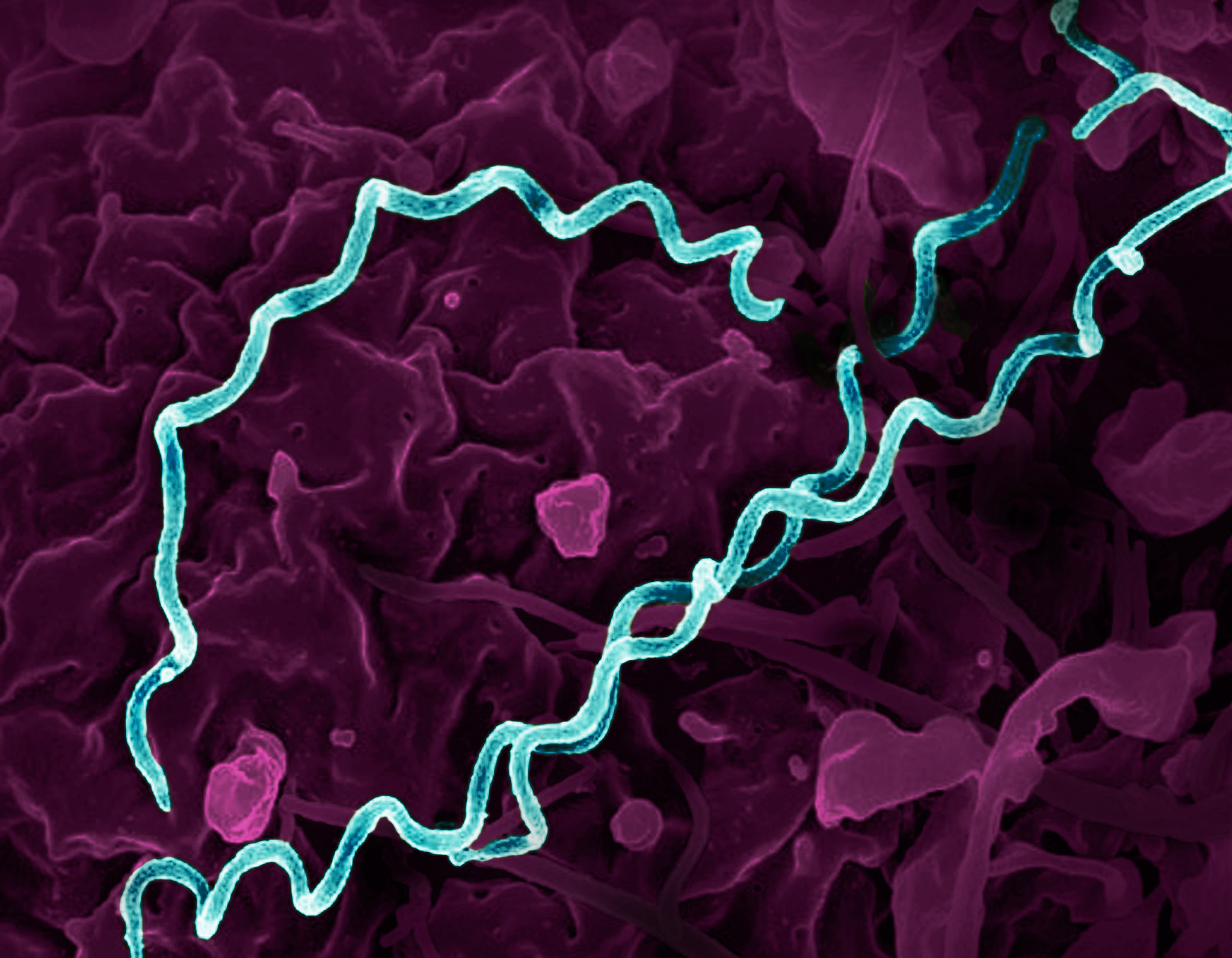Syphilis << SIHF uh lihs >> is a sexually transmitted disease that can lead to a variety of severe symptoms if left untreated. Syphilis is caused by a spirochete (corkscrew-shaped bacterium) named Treponema pallidum. This organism is usually spread during intimate sexual activity.

Syphilis typically progresses through three stages if left untreated: (1) primary, (2) secondary, and (3) tertiary, or late. A usually prolonged latent period, characterized by the total absence of symptoms, occurs between the second and third stages.
Primary syphilis develops 10 days to three months after infection. It begins as a small, red pimple at the site of infection. This pimple develops into a sore called a chancre. The chancre is usually painless and may go unnoticed. It disappears within six weeks.
Secondary syphilis usually begins about two to eight weeks after the chancre disappears. This stage is recognized chiefly by a rash. The rash may appear on many parts of the body, especially the soles of the feet and the palms. The patient may also experience such symptoms as fever, headache, and hair loss. These symptoms usually disappear within several weeks.
In the latent period, infection can only be detected by a blood test. If the disease still goes untreated, late syphilis may result in severe, irreversible complications later in the patient’s life. In this final stage, the spirochete may attack the brain, heart, skin, bones, and spinal cord, causing blindness, deafness, mental illness, dementia, heart problems, paralysis, and bone deformities. A pregnant woman who has syphilis can pass the disease to her unborn child. Many such babies die before birth. Those born alive may suffer from such disorders as blindness, deafness, abnormal bone growth, or intellectual disability.
Doctors diagnose syphilis through a blood test. It can also be diagnosed by identifying Treponema pallidum in scrapings from chancres or other sores. Syphilis is treated with penicillin or other antibiotics. Penicillin cures syphilis if given early in the course of the disease. Given later, antibiotics can prevent development of further complications of late syphilis.
In 1998, researchers identified the complete sequence of genes in syphilis bacteria. Scientists hope that knowledge of these genes will reveal new ways to prevent and treat the disease.
See also Sexually transmitted disease; Tabes.
